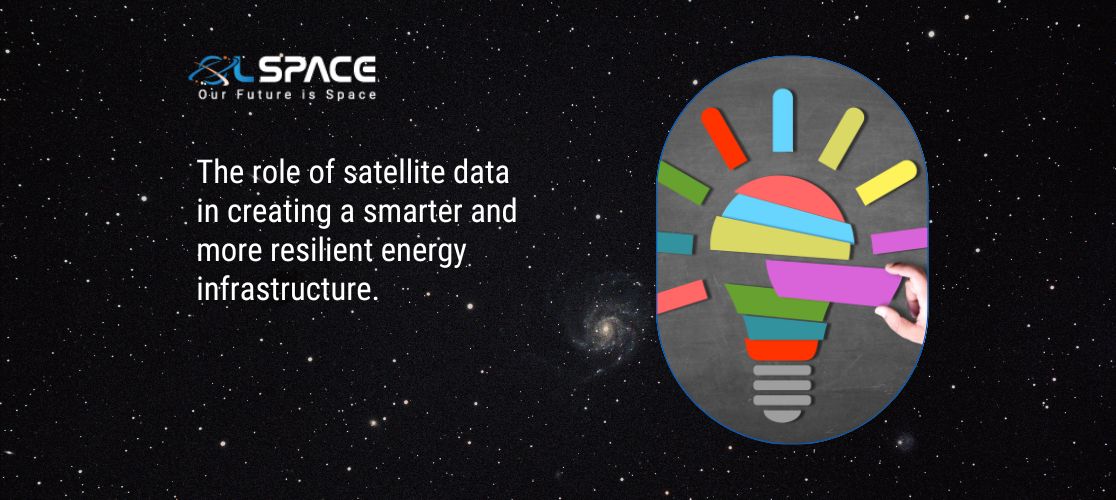23 January 2024
The role of satellite data in creating a smarter and more resilient energy infrastructure.

Satellite data plays a pivotal role in creating a smarter and more resilient energy infrastructure by providing valuable information for planning, monitoring, and optimising various aspects of the energy sector. Here are key ways in which satellite data contributes to enhancing the resilience and efficiency of energy infrastructure:
Site Selection and Planning:
Land Use and Geographic Information: Satellite imagery assists in assessing suitable locations for energy infrastructure, such as solar and wind farms, by providing detailed information about land use, topography, and environmental conditions.
Resource Mapping: Satellite data helps map natural resources such as solar radiation and wind patterns. This information is critical for optimising the placement of solar panels and wind turbines to maximise energy generation.
Infrastructure Monitoring and Maintenance:
Vegetation Management: Satellite imagery aids in monitoring vegetation around power lines and energy infrastructure. This information is crucial for preventing vegetation-related outages and optimising maintenance schedules.
Asset Inspection: Satellite data enables remote inspection of energy infrastructure, including power lines, pipelines, and substations. This reduces the need for physical inspections, saving time and resources.
Weather and Disaster Monitoring:
Climate and Weather Data: Satellites provide real-time weather and climate data, helping energy operators anticipate and respond to weather-related challenges. This includes forecasting storms, hurricanes, and extreme temperatures that may impact energy infrastructure.
Disaster Response and Recovery: In the aftermath of natural disasters, satellites assist in assessing damage to energy infrastructure. This information aids in prioritising recovery efforts and restoring energy services efficiently.
Grid Management and Optimisation:
Transmission Line Monitoring: Satellite data helps monitor the condition of transmission lines, identifying potential issues such as sagging or damage. This information supports proactive maintenance and reduces the risk of outages.
Load Forecasting: Satellite data, combined with other sources, contributes to accurate load forecasting. This helps energy providers optimise grid operations, balance supply and demand, and enhance overall grid reliability.
Renewable Energy Integration:
Solar Irradiance and Wind Mapping: Satellites provide data on solar irradiance and wind patterns, assisting in the integration of renewable energy sources. This information helps manage the variability of renewable energy generation.
Energy Yield Assessment: Satellite data supports the assessment of energy yield from renewable sources, aiding in project planning and investment decisions for solar and wind energy projects.
Environmental Impact Assessment:
Emission Monitoring: Satellites contribute to monitoring air quality and emissions, providing valuable insights for assessing the environmental impact of energy infrastructure and ensuring compliance with environmental regulations.
Land and Water Use Monitoring: Satellite data helps monitor the impact of energy projects on land and water resources. This information supports sustainable development practices and minimises negative environmental effects.
Global Energy Security:
Monitoring Energy Infrastructure Worldwide: Satellites enable global monitoring of energy infrastructure, contributing to energy security by providing real-time insights into the status and resilience of energy facilities worldwide.
Early Warning Systems: Satellite data supports the development of early warning systems for potential disruptions to energy supplies, whether due to geopolitical events, natural disasters, or other factors.
Remote Off-Grid Monitoring:
Remote Sensing for Off-Grid Areas: In remote or off-grid regions, satellites provide a means of monitoring and managing energy infrastructure without the need for extensive ground infrastructure. This is particularly valuable for monitoring standalone renewable energy systems.
By harnessing the capabilities of satellite data, the energy sector can make more informed decisions, enhance operational efficiency, and build a resilient infrastructure capable of withstanding various challenges. As technology continues to advance, the integration of satellite data will play an increasingly crucial role in shaping the future of a smart, sustainable, and resilient energy landscape.
